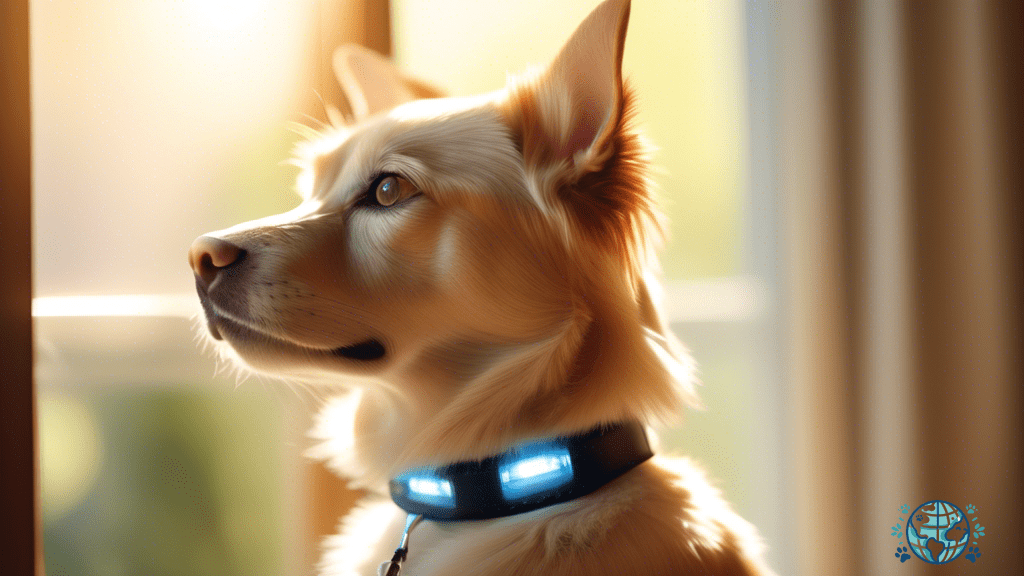Are you planning to take your furry friend on a grand adventure? Well, before you embark on your journey, it’s important to ensure that your pet is properly microchipped.
Yes, you heard it right – microchipping your pet is not just for identification purposes, but it is also a requirement for traveling with your beloved companion.
In this article, we will delve into the world of pet travel microchipping, exploring the requirements and benefits that come along with it.
So, grab a cup of coffee, sit back, and let’s dive into the fascinating world of microchipping for pet travel!
Now, you may be wondering, what exactly is microchipping? Well, my friend, it is a small electronic chip, about the size of a grain of rice, that is implanted beneath your pet’s skin.
This tiny chip contains a unique identification number that can be scanned by a microchip reader. Not only does microchipping help with the identification of your pet, but it is also a crucial requirement for international travel.
So, if you and your furry companion are planning a jet-setting adventure, you better make sure that microchip is in place!
But fret not, for in this article, we will guide you through the requirements for microchipping your pet for travel, as well as the numerous benefits that come along with it.
So, get ready to embark on a journey of knowledge and humor, as we explore the world of pet travel microchipping!
Key Takeaways
- Microchipping is essential for pet safety during travel as it helps in identifying lost pets and reuniting them with their owners.
- Microchips can be scanned by veterinarians, animal shelters, and other authorized personnel to access the pet’s contact information.
- It is important to keep the microchip information up to date, including the owner’s contact details, to ensure a higher chance of finding lost pets.
- Pet owners should be aware of the specific microchipping requirements and regulations for travel, both domestically and internationally.
Understanding Microchipping for Pet Travel
Now that you understand the benefits of microchipping for pet travel, let’s dive into how it works and what you need to know.
Picture this: you and your furry friend are embarking on a grand adventure, traveling to new places and making memories together. But oh no! Your precious pooch gets separated from you in the chaos of a crowded airport. Cue the dramatic music and the slow-motion running scene as you desperately search for your lost companion. But fear not, because microchipping is here to save the day!
So, what exactly is microchipping? Well, it’s like giving your pet a tiny, high-tech ID card. A microchip, about the size of a grain of rice, is implanted under your pet’s skin, typically between the shoulder blades. This little chip contains a unique identification number that can be scanned by a special device. It’s like having your pet wear a tuxedo to a party – they’ll definitely stand out from the crowd! And don’t worry, the process is quick and relatively painless for your furry friend, so they won’t hold a grudge against you for the rest of their nine lives.
But why should you bother with microchipping for pet travel? Well, imagine this: you’re sipping a fruity drink on a sunny beach, feeling the sand between your toes, when suddenly you get a call. It’s the local animal shelter, and they have your lost fluffball! Thanks to the microchip, they were able to scan your pet and trace them back to you. No more frantic searching or tearful goodbyes – just a happy reunion and a wagging tail. Plus, some countries even require microchipping for pet travel, so it’s like a passport for your furry friend.
So go ahead and embrace the power of microchipping – your pet will thank you, and you’ll have peace of mind knowing they’re always just a scan away.
International Travel Requirements for Microchipped Pets
First, let’s talk about what you need to know when taking your furry friend on an international trip. It’s not as simple as just packing their favorite chew toy and hopping on a plane. There are some specific requirements that you need to be aware of, especially when it comes to microchipping your pet. Here’s what you need to know:
- Microchip Compatibility: Not all microchips are created equal, my friend. Different countries have different standards for microchips, so make sure that the one your pet has is compatible with the destination country. You don’t want to end up with a pet that can’t be identified because their microchip isn’t recognized.
- Documentation: Ah, the joy of paperwork. When traveling internationally with a microchipped pet, you’ll need to make sure that you have all the necessary documentation. This includes proof of microchipping, vaccination records, and any other required health certificates. It’s like preparing for a pop quiz, but instead of getting an A, you get to travel with your furry friend.
- Timing is Everything: Just like a magician’s trick, timing is everything when it comes to international pet travel. Some countries have specific time requirements for microchipping. For example, they may require that your pet is microchipped at least 21 days before arrival. So, make sure to plan ahead and give yourself enough time to meet these requirements. Otherwise, you might find yourself stuck at the airport with a disappointed pet and a one-way ticket back home.
- Backup Plan: Ah, the unpredictable nature of life. It’s always good to have a backup plan, just in case things don’t go as smoothly as planned. So, make sure you have a copy of your pet’s microchip number, just in case their collar goes missing or their microchip decides to take a vacation of its own. It’s better to be safe than sorry, my friend.
So, there you have it, the important things you need to know when it comes to international travel with a microchipped pet. It may seem like a lot of hoops to jump through, but hey, anything for our furry friends, right?
Now go ahead and start planning that epic adventure with your four-legged buddy!
Benefits of Microchipping Your Pet for Travel
Imagine never having to worry about losing your furry friend while on vacation, all thanks to a tiny chip that ensures their safe return. That’s the beauty of microchipping your pet for travel!
Not only does it provide peace of mind, but it also offers a multitude of benefits that will make your travel experience with your pet even more enjoyable.
First and foremost, microchipping your pet for travel greatly increases the chances of being reunited with them if they were to ever get lost. With a microchip, your pet’s information, including your contact details, is stored electronically. So, if they were to wander off or get separated from you, any veterinarian, shelter, or animal control officer can scan their microchip and quickly contact you. It’s like having a built-in GPS for your pet!
But the benefits don’t stop there. Microchipping also eliminates the need for cumbersome identification tags that can easily get lost or damaged during travel. No more worrying about your pet’s tag falling off their collar in the middle of an adventure. Plus, it saves you the hassle of constantly updating their tags with new contact information every time you move or change phone numbers. With a microchip, your pet’s identification is always with them, no matter where they go.
So, don’t wait any longer! Make sure to microchip your pet before your next travel adventure. Not only will it provide you with peace of mind, but it will also ensure that your furry friend is always just a scan away.
Happy travels!
How to Get Your Pet Microchipped
If you want to ensure the safety and security of your furry companion, getting them microchipped is a simple and effective solution. Microchipping your pet involves implanting a tiny electronic chip under their skin, which contains a unique identification number. This number is linked to your contact information in a database, making it easy for veterinarians, animal shelters, and other authorized individuals to identify and contact you if your pet is lost or found.
To get your pet microchipped, you can visit your veterinarian or a local animal shelter. The procedure is quick and relatively painless, similar to getting a routine vaccination. Once the microchip is implanted, your veterinarian will register the chip’s unique identification number along with your contact details in a national pet recovery database, ensuring that your information is easily accessible.
Here’s a helpful table to highlight the benefits of microchipping your pet:
| Benefits of Microchipping Your Pet |
|---|
| 1. Increases the chances of being reunited with your lost pet |
| 2. Provides a permanent form of identification |
| 3. Helps prevent pet theft |
| 4. Required for international pet travel |
| 5. Can assist in resolving ownership disputes |
Remember, microchipping is just one part of responsible pet ownership. It’s essential to keep your contact information up to date in the database, so if your pet goes missing, they can be quickly identified and returned to you. So go ahead and give your furry friend the gift of a microchip – it’s a small investment for a lifetime of peace of mind!
Tips for Traveling with a Microchipped Pet
To ensure a smooth journey with your furry companion, don’t forget to pack their favorite toys and treats for some extra comfort along the way. Trust me, you don’t want to be stuck in a car with a grumpy pet who’s bored out of their mind. Plus, it’s a great opportunity to spoil them a little. Who doesn’t love seeing their pet’s eyes light up with excitement when they get a new toy or treat?
Now, let’s talk about the microchip. While it may not be as exciting as a squeaky toy or a tasty treat, it’s a crucial tool for keeping your pet safe while traveling. Think of it as your pet’s very own GPS system. If they happen to wander off or get lost in a new place, their microchip can be scanned by a veterinarian or animal shelter to identify them and help them find their way back to you. It’s like a secret agent gadget for pets!
So, while you’re busy packing your pet’s favorite goodies, don’t forget to make sure their microchip information is up to date. It’s a small task that can make a big difference in ensuring your pet’s safety and your peace of mind during your travels. And hey, if your pet ever becomes a world-famous adventurer, they’ll have their microchip to thank for helping them find their way back home.
Frequently Asked Questions
What is the cost of getting a pet microchipped for travel?
Getting your pet microchipped for travel can cost anywhere from to , depending on your location and the type of microchip used. But hey, isn’t peace of mind priceless? Plus, it’s like giving your fur baby a cool secret agent gadget!
Are there any health risks associated with microchipping a pet for travel?
While there are minimal risks associated with microchipping, such as infection or migration, these are extremely rare. So go ahead and chip your furry friend for travel, the only risk is them stealing the show!
Can I update my pet’s microchip information if I change my contact details?
Of course you can! Updating your pet’s microchip information is important, especially if you change your contact details. It’s a simple process that ensures your furry friend can always find their way back to you.
Is microchipping required for all types of pets or only specific ones?
Yes, microchipping is required for all types of pets, not just specific ones. So whether you have a dog, cat, or even a pot-bellied pig, make sure to get them chipped for their safety and your peace of mind!
Are there any countries that do not accept microchipped pets for travel?
No worries, pet parent! While most countries accept microchipped pets for travel, it’s always best to double-check. Some unique places may have their own rules, but with a little research, you’ll be jet-setting with your furry friend in no time!
Last Updated: January 21, 2024
Disclosure: We may receive affiliate compensation for some of the links in this article at no additional cost to you if you decide to purchase a product. You can read our affiliate disclosure in our privacy policy.
Kevin Fairbanks is your go-to guide for all things pet travel. With a passion for adventure and a heartwarming love for his two feline companions, Spooky and Penelope (lovingly known as Nelly), Kevin understands the joys and challenges of exploring the world with furry friends.
As an avid traveler and a nature enthusiast, Kevin is no stranger to the great outdoors. Whether he’s camping under the starry skies or exploring pet-friendly cityscapes, he’s always on the lookout for new experiences to share with pets and pet owners alike.
Kevin’s journey into the world of pet travel was inspired by his beloved Chihuahua, Lola, who recently crossed the Rainbow Bridge. Her memory lives on through the valuable insights and tips he provides to fellow travelers.
Join Kevin as he combines his passion for adventure, love for pets, and wealth of knowledge to help you navigate the exciting world of pet-friendly travel. Whether you’re planning a pet passport adventure or seeking the best cat-friendly lodging, Kevin has you covered.
Follow along with Kevin’s adventures and gain valuable insights into making your pet travel experiences memorable and stress-free.
Verified and Approved by:

Kevin Fairbanks
Head of SEO
Like This Article?
Share with your friends
Table of Contents
Latest Articles
Keep Reading
-
Capture Amazing Pet Travel Photos With These Tips
Discover the secrets to capturing stunning pet travel photos! From adorable poses to breathtaking backdrops, these expert tips will make your furry friend shine. Don’t miss out on creating memories that will last a lifetime – click here for our top pet travel photography tips now!
-
Inspirational Pet-Friendly Hiking Stories
Uncover heartwarming pet hiking stories that will inspire you to hit the trails with your furry companion. Join these adventurous owners and their pets on unforgettable journeys together. Get inspired and start your own epic hiking adventure today!
-
Best Cat-Friendly Campsites For A Purrfect Camping Adventure
Looking for cat-friendly campsites? Explore the best options for a purrfect camping adventure with your furry friend. Unleash the fun outdoors and create unforgettable memories together. Click now to plan your next meow-nificent getaway!




